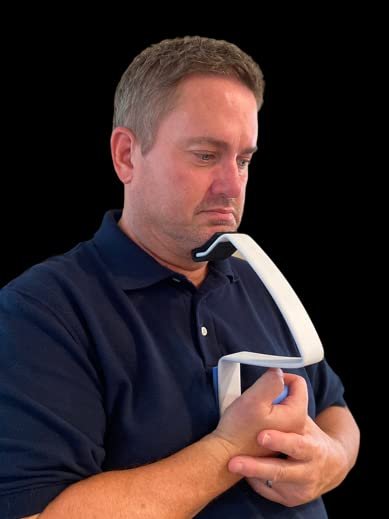AAOS Shoulder Exercises: Unlock Your True Potential!
Are your shoulders holding you back from the activities you love? Whether you’re experiencing pain, recovering from an injury, or simply looking to boost your strength and mobility, this guide is for you. We’ll delve into the world of shoulder exercises recommended by the American Academy of Orthopaedic Surgeons (AAOS), a leading authority in musculoskeletal health. With clear instructions, expert tips, and a focus on safety, you’ll be empowered to achieve stronger, healthier shoulders.
Why Shoulder Health Matters
Your shoulders are incredible joints, allowing for a wide range of movement that’s essential for everyday tasks and recreational activities. From lifting groceries to playing sports, your shoulders are involved in nearly everything you do. However, they’re also vulnerable to injury and pain, which can significantly impact your quality of life.
That’s where the AAOS comes in. Their expert recommendations provide a roadmap to strengthening and protecting your shoulders, helping you maintain an active lifestyle and preventing future problems. Best Bodyweight Exercises
Understanding Your Shoulders
Before diving into the exercises, let’s take a quick look at how your shoulders are structured and some common issues that can arise:
Anatomy:
Your shoulder is a complex ball-and-socket joint formed by three bones: the upper arm bone (humerus), the shoulder blade (scapula), and the collarbone (clavicle). These bones are held together by muscles, tendons, and ligaments.
Common Problems:
Some of the most common shoulder problems include:
-
Rotator cuff tears:
Damage to the tendons that stabilize the shoulder joint.
-
Impingement syndrome:
Pinching of tendons or bursa (fluid-filled sacs) under the shoulder blade.
-
Frozen shoulder:
Stiffness and pain due to thickened tissue around the shoulder joint.
-
Arthritis:
Inflammation and wear-and-tear of the joint cartilage.
These conditions can cause pain, limited range of motion, and weakness. However, with the right exercises, you can address these issues and restore your shoulder function.
Warm-Up: Get Your Shoulders Ready
Before starting any exercise routine, it’s crucial to warm up your shoulder muscles to prevent injuries. Here are a few gentle movements to get you started:
-
Arm circles:
Stand with your arms at your sides. Slowly rotate your arms forward in small circles, gradually increasing the size. Do 10 repetitions, then reverse the direction and repeat.
-
Pendulum swings:
Lean forward slightly and let your arms hang loosely. Gently swing your arms back and forth, side to side, and in circles. Do 10 repetitions in each direction.
AAOS-Recommended Shoulder Exercises
Now, let’s explore some of the most effective shoulder exercises recommended by the AAOS, categorized by their focus:
Strengthening Exercises
-
External rotation:
Stand with your elbow bent at 90 degrees and your forearm resting on your stomach. Hold a light weight or resistance band in your hand and slowly rotate your forearm outward. Do 10-15 repetitions.
-
Internal rotation:
Similar to external rotation, but rotate your forearm inward.
-
Shoulder abduction:
Lie on your side with your arm at your side. Slowly lift your arm up towards the ceiling, keeping your elbow straight. Do 10-15 repetitions.
Stretching Exercises
-
Cross-body shoulder stretch:
Gently pull one arm across your body with the opposite hand until you feel a stretch in the back of your shoulder. Hold for 30 seconds, then repeat on the other side.
-
Sleeper stretch:
Lie on your side with your bottom arm outstretched. Bend your top arm at a 90-degree angle and gently press your forearm down towards the bed. Hold for 30 seconds, then repeat on the other side.
Pain-Relief Exercises
-
Wall slides:
Stand facing a wall with your feet shoulder-width apart. Place your forearms on the wall and slowly slide them up as high as you can without pain. Hold for 30 seconds, then slowly slide back down.
-
Doorway stretch:
Stand in a doorway with your arms outstretched and your hands on the door frame. Lean forward until you feel a stretch in the front of your shoulders. Hold for 30 seconds.
Important Considerations
-
Proper Form:
Pay close attention to your form and technique to avoid injury. Watch instructional videos or consult a physical therapist if needed.
-
Listen to Your Body:
Stop any exercise that causes pain and consult a doctor if you have concerns.
-
Consistency is Key:
Aim to do these exercises regularly for optimal results.
-
Progress Gradually:
Start with a lighter weight or fewer repetitions and gradually increase as you get stronger.
-
Consult a Professional:
If you have a shoulder injury or chronic pain, seek guidance from a healthcare professional before starting an exercise program.
Conclusion
By incorporating these AAOS-backed shoulder exercises into your routine, you can strengthen your shoulders, improve your mobility, and reduce pain. Remember, consistency is key, so make these exercises a regular part of your lifestyle. With dedication and proper guidance, you’ll be well on your way to achieving optimal shoulder health.
Disclaimer: This blog post is for informational purposes only and should not be considered medical advice. Consult a healthcare professional for personalized guidance on your shoulder health.







